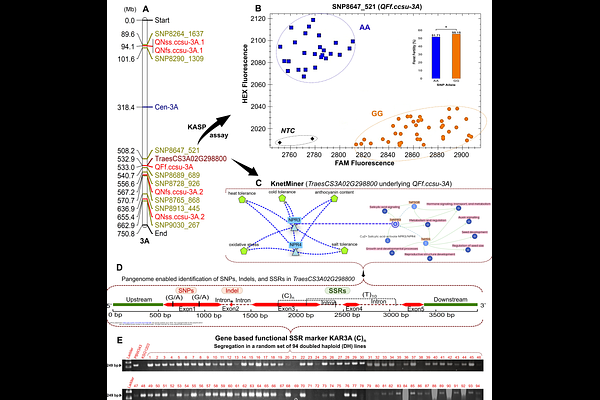Investigations into genetic control of six spike traits with a focus on breeding for terminal heat stress tolerance in common wheat

Investigations into genetic control of six spike traits with a focus on breeding for terminal heat stress tolerance in common wheat
Kumar, S.; Kumar, S.; Singh, V. P.; Sharma, H.; Rawale, K. S.; Bhatt, S. K.; Vairamani, R.; Gill, K. S.; Balyan, H. S.
AbstractTo unravel the genetic architecture of six spike traits under heat stress, we used a doubled-haploid (DH) population (177 lines), developed from a cross between a heat-sensitive cultivar (PBW343) and a heat-tolerant genotype (KSG1203). This DH population and the two parents were phenotyped under timely, late, and very late sown conditions across 15 environments over three years and two locations. Best linear unbiased estimates and a high-density genetic map (5,710 SNP markers) were used for QTL mapping. A total of 51 QTL were detected in timely (17), late (10), and very late (18) sown conditions, with six common across environments with phenotypic variation explained ranging from 7.1% to 23.6%. A set of 14 stable, major QTL were validated in high-yielding DH lines and are recommended for marker-assisted recurrent selection. Several QTL co-localized with known genes responsible for important traits including grain yield (TaGW2-B1, PI1-1B). Seventy heat-responsive candidate genes associated with QTL were identified, encoding 33 proteins. A KASP marker for floret fertility QTL (QFf.ccsu-3A), and gene-based SSR markers for five key genes were developed and validated alongside Indels and SNPs. The generated genomic resources could be used in future studies and to breed heat-tolerant, high-yielding wheat varieties and germplasm.